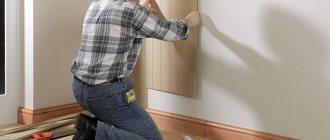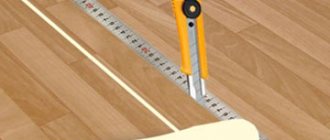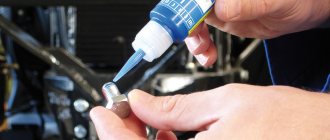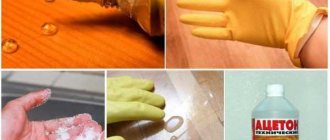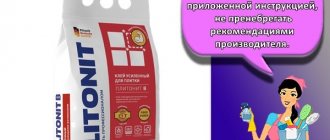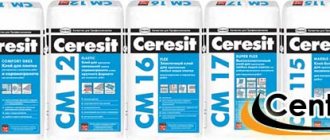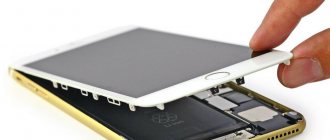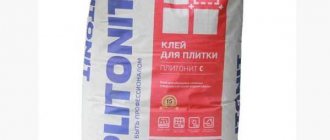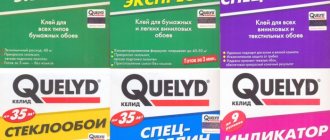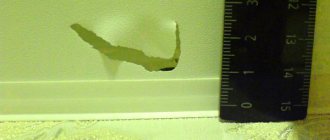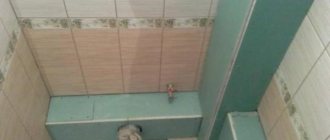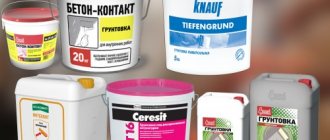Ceramic and metal pipes are losing their popularity; they have been replaced by plastic products, which stand out for their durability and lightness. But a long service life can only be ensured if their installation was carried out correctly and reliable adhesive for PVC pipes was used. More information about which pipe adhesives are best to choose will be discussed below.
Adhesive for PVC pipes
To glue these products together in order to create reliably sealed joints, special glue for plastic pipes is used. “Cold welding” makes it possible to build a water supply as quickly as possible. But the process has its own characteristics.
“Cold welding” makes it possible to build a water supply as quickly as possible.
Advantages of adhesive pipe joints
Plastic pipes can be welded, glued and joined mechanically. The most popular method is welding. But it requires expensive equipment and can only be performed by professionals. Gluing can help achieve the same quality result, sometimes the seams are even stronger.
True, most adhesives for sewer pipes are effective for cold water supply; exposure to high temperatures can damage their integrity.
They have a number of positive properties:
- The risk of leaks is reduced. The seams are completely sealed and can only be negatively affected by exposure to hot temperatures and pressure;
- Easy to use, installation can be done by hand, no additional steps are required;
- It is not difficult to glue plumbing pipes with an adhesive composition, and this saves money on the services of professionals, and you also do not need to buy a welding machine;
- Universal use, one solution can be used to create sewerage and water supply systems.
Gluing can help achieve the same quality result, sometimes the seams are even stronger.
What does it consist of and how is it produced?
Polyvinyl chloride is a hard and durable thermoplastic. It is obtained from vinyl chloride by polymerization. In the hydrocarbon chain, every fourth hydrogen atom is replaced by chlorine.
PVC production technology is complex, but not very expensive. In mixers, different components are combined, the suspension or emulsion is polymerized. They receive either a semi-finished product - sheets, granules - or immediately finished products, for example pipes, corrugated sheets.
A small amount of lubricating additives is added to the composition to facilitate processing, and stabilizers to improve strength properties. Sometimes modifiers, dyes, and fillers are added. Fillers reduce cost, modifiers and fillers improve mechanical properties. Dyes add color and make the plastic opaque - this is necessary for protection from ultraviolet rays.
After painting, ultraviolet light penetrates to a shallow depth; only the ultra-thin top layer of material (0.05 mm) is subjected to photodestruction. The bulk of the plastic does not degrade, which is why polyvinyl chloride is called UV-resistant, without going into the intricacies of creating resistance to sunlight.
Regular PVC has little resistance to elevated temperatures, so it is chlorinated to create chlorinated PVC.
Methods for gluing PVC pipelines
There are two main methods of joining materials: hot and cold. The first option involves the use of a soldering machine; this technique helps to obtain high-quality adhesion. Even if the sealing did not work out well, the seam did not come out correctly, the fixation will be reliable, because the temperature is applied to at least 260 degrees. The second method will be discussed below.
The hot option involves the use of a soldering machine; this technique helps to obtain high-quality adhesion.
Which method is best to use
The choice of method depends on the operating conditions and the purpose for which the pipes are intended. Cold welding can only be used for cold water supply. The choice can also be influenced by budgetary possibilities; cold bonding is cheaper. After all, you can do without the services of professionals; the method is simple.
Cold welding can only be used for cold water supply.
Advantages of cold welding
The use of adhesives for polyethylene and polyvinyl chloride pipes has its positive qualities that distinguish this method compared to the hot method:
- The structure of the material remains smooth, which further helps to avoid the formation of blockages;
- There will be no leaks, the reliability of the connection is enormous;
- The process takes little time;
- Ease of operation, which saves money.
The structure of the material remains smooth, which helps to avoid the formation of blockages in the future.
Working with a cast iron radiator when leaking
It happens that the heating battery leaks - the threaded joint has deteriorated, or a leak has appeared in the section. Repairs will require epoxy glue and a bandage. The material is impregnated with glue and applied to the hole area. After setting, you can paint this area with the main color. This measure is considered temporary, and after turning off the heating it is better to replace the radiator.
Cold welding of batteries is also used. The special product is kneaded in your hands and applied to the injury site. It quickly melts, sets and allows the “patch” to exist until the heating is turned off.
You should not try to glue radiators if there is a strong leak that has led to an emergency. It is better to immediately call a team of specialists who will stop the leak and replace the radiator with a new one.
The nuances of choosing the right type of glue
To choose the right adhesive for plastic pipes for water supply, you need to know a number of criteria:
- The place where the gluing will take place depends on the zones and conditions, which compounds should be purchased. You may need to purchase several different solutions;
- The pressure exerted on the material, manufacturers indicate in the instructions how much pressure the seam can withstand;
- Exerted loads. If the composition is not of very high quality, then displacement may occur under mechanical stress, so you should choose high-quality solutions;
- Temperatures and solutions may only be suitable for certain purposes, so you need to study the information about the purpose of the product on the packaging;
- Pay attention to the components, they may contain toxic substances. If a person is prone to allergies, then he should not carry out the work himself.
Solutions may only be suitable for certain purposes, so you need to study the information on the purpose of the product on the packaging.
Review of the best brands
Adhesives for HDPE pipes and pipes made of other types of plastic are produced by different manufacturers. The most popular of them:
- TANGIT, has a quality certificate, suitable for cold water. Creates a particularly strong grip and is easy to use;
Creates a particularly strong grip and is easy to use. - Mars, a domestic product, uses synthetic resin and diluents. Creates reliable sealing of the joint.
Creates reliable sealing of the joint.
Products from Phoenix and Vinilit companies are also in demand.
Review of the best brands
In all ratings of adhesives for PVC pipes, the leading brands are Tangit (Germany), Genova (USA), Griffon (Netherlands), Gebsoplast (France). Buyers speak well of the adhesives “Phoenix” , “Vinilit”, “Mars” and others, but they are not so in demand and popular.
All types of glue for polymer pipes operate on the same principle, are available in packages of various sizes, and the appropriate composition should be selected depending on the purpose and technical characteristics.
Image gallery
Photo from
Reliable “pair” - glue and Tangit solvent
Genova glue - composition from the pipe manufacturer
Griffon universal adhesive in 1 liter package
Gebsoplast adhesive for water supply and sewerage
Step-by-step instructions for using the composition
Work should be carried out at temperatures from +5 to + 30 degrees, good ventilation should be ensured. The following steps are performed:
- First, the pipeline must be cleaned of all types of contaminants and also degreased;
- They make markings, indicate the places where the coupling will take place, it is better to draw a diagram in advance;
- The pipes are cut to the required sizes;
- You can use a glue gun or a brush to apply glue. The solution should be applied evenly to the surface; there should be no empty areas;
- Having connected the parts, hold them for half a minute so that setting occurs, it is advisable to leave them for 24 hours;
- If excess glue comes out, wipe it off immediately;
- After 24 hours, the fixation is checked to see if there are any leaks left.
Work should be carried out at temperatures from +5 to + 30 degrees, good ventilation should be ensured.
Rules for working with adhesives
To cut the material, it is better to use a pipe cutter; it will ensure smooth cutting. It is better to also treat the surface with sandpaper to improve adhesion.
It is recommended to try on the materials first to ensure correct cutting.
To cut the material, it is better to use a pipe cutter; it will ensure smooth cutting.
Which is better
Among all the compounds that can glue polyethylene film, the leading position is occupied by Weicon Easy-Mix PE-PP , designed specifically for materials with weak adhesion. This is an acrylate glue with filler. It contains very small glass beads that do not allow the composition to slip out of the gluing area; they form a gap of optimal thickness.
the KLEYBERG 152-1 line is perfect for foamed polyethylene due to its unique composition and wide range of uses.
Causes of defects in adhesive joints
The use of glue ensures durability and reliability of fastening of polypropylene pipes, but sometimes water leaks occur. The reasons are:
- Poor surface preparation, presence of significant irregularities;
- Presence of dirt and grease;
- Incomplete sizing of the seam, actions must be carried out quickly, otherwise a film may form on the glue, which will no longer allow obtaining a strong adhesion;
- Poor mixing of the solution, no bubbles are left;
- Low compression force of materials, violation of compression time;
- Inappropriate adhesive composition.
The use of glue ensures durability and reliability of fastening of polypropylene pipes, but sometimes water leaks occur.
Glue for PVC pipes and fittings is an excellent option for joining them yourself. The method will help save your budget, but the solution must be chosen carefully. And the work is carried out in compliance with the rules.
Technical characteristics of polyethylene
Polyethylene film is used as insulation, packaging material, and electrical insulator. It can reliably protect against moisture and absorbs neutrons, which are a type of radioactive radiation. Foamed polyethylene, otherwise called isolon or polyfol, is used to insulate a home - it is used to cover walls.
The question of how to glue polyethylene arises quite often. The usual composition is not suitable for these purposes, since the material is chemically inert. A special glue for polyethylene is required.
Polyethylene bonding is an electrical and chemical based process. The adhesive composition should adhere well to the surface of the film, and after hardening, reliably adhere the surfaces to each other.
There are two ways to firmly glue polyethylene:
- High temperature welding (iron).
- Use of adhesives.
Manufacturers' recommendations
All responsible brands of glue manufacturers always leave recommendations for its use on the jar. The main ones:
- You cannot leave the jar open even for a few minutes, as the product dries out. The maximum time for which you can leave it uncovered is 7 minutes;
- in hot weather, the product will become unsuitable for use within a minute, since it evaporates at high temperatures, and at low temperatures it becomes viscous and dense;
- carefully read the instructions on the tube of each brand, since some two-component mixtures must be mixed; if this is done incorrectly, the adhesive properties will be lost;
- to securely fasten the elements, it is necessary to degrease the surfaces with a special solvent from the same company as the mixture;
- It is better to buy an adhesive composition of medium viscosity, it is easy to apply and does not spread on the surface;
- You should buy colorless glue, as it is invisible on products of any color.
How to reliably glue polypropylene - do-it-yourself pipeline repair
Polypropylene is one of the hard-to-glue plastic materials. Only very recently have special means for fastening it appeared on sale, and they are presented in a fairly wide range. Let's consider the types of glue for polypropylene, the procedure for repairing pipes and other elements, and dwell on individual brands of glue, their advantages and disadvantages.
The most popular method of fastening polypropylene parts has become the hot welding method. Many have already noticed this, observing the installation of cold or hot water or the laying of sewerage. This method quickly creates a reliable connection between polyethylene pipes, but specialized equipment is required. This method is also considered hazardous because it involves dealing with heating elements.
Scope of application
The connection of polyvinyl chloride pipes forms engineering networks: pressure water supply systems, sewerage systems, pipelines for transporting aggressive liquids and gases. The material is used to make containers for liquids, air ducts, laboratory glassware and equipment.
PVC pipelines, due to their ability to self-extinguish and high resistance to fire, began to be used for fire water supply systems. Chlorinated PVC is used for hot water and heating pipes.
